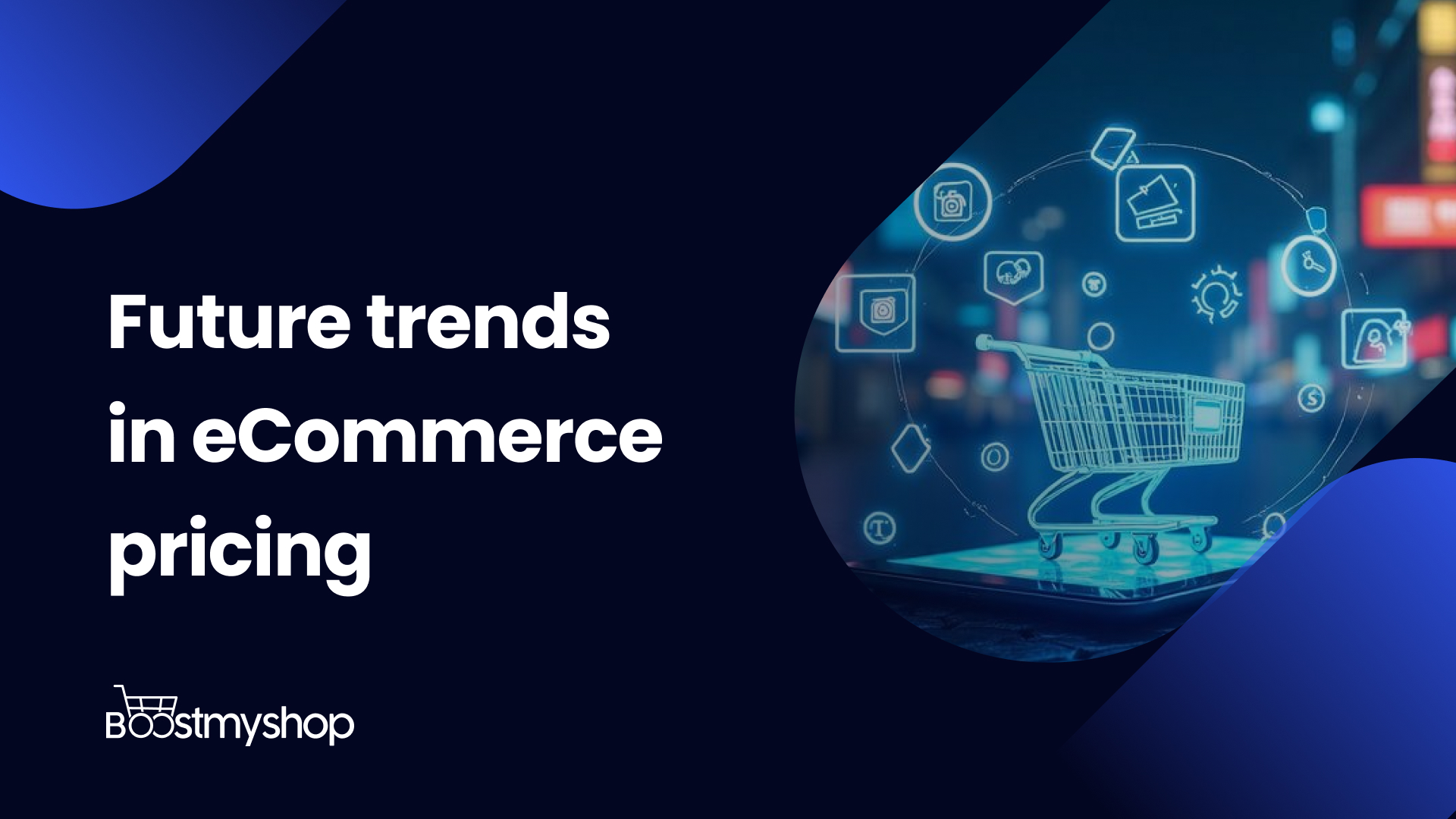Future trends in eCommerce pricing
Ecommerce is a competitive battlefield powered by AI, real-time data, and customer expectations that shift overnight. Businesses are moving away from static pricing and embracing smarter, data-driven strategies powered by AI, machine learning, and automation. Here’s what’s shaping the future of pricing:
- AI & Machine Learning: Enable real-time price adjustments and personalized offers that boost revenue and customer satisfaction.
- Data Scraping Tools: Automate competitor price tracking and market research, giving businesses the insights they need to set winning prices.
- Blockchain: Brings greater price transparency and helps build customer trust by verifying fair pricing and transaction integrity.
- IoT Integration: Connects supply chain, inventory, and logistics data to dynamically adjust pricing based on real-time stock levels and demand.
- Augmented Reality (AR): Enhances customer engagement with immersive experiences — adding value that justifies premium pricing.
These emerging technologies are transforming how businesses set, adapt, and communicate prices — helping them stay competitive and meet rising customer expectations.
AI and Machine Learning
Ecommerce businesses that have adopted a dynamic pricing model have seen significant success. Dynamic pricing involves changing the product pricing based on market conditions, internal and external factors like market trends, seasonal demand, inventory on-hand, demand and supply and competition, and consumer expectations/perception. Data-driven pricing can easily pick up on trends and patterns and help optimise pricing, resulting in improved profitability. Algorithms based on artificial intelligence (AI) and machine learning (ML) add high value to pricing strategies. In fact, they can completely transform pricing methods. Generative AI (Gen AI) can be used to increase dataset diversity and produce synthetic data points to improve demand forecasting precision.
Data Scrapping Tools in ecommerce pricing
Data scraping tools play a vital role in modern e-commerce pricing strategies. They automatically gather real-time competitor pricing data across multiple marketplaces and channels — information that would be nearly impossible to track manually at scale. By using these tools, businesses gain clear visibility into market trends, price fluctuations, and competitor moves.
This continuous stream of competitor data is the backbone of competitive analysis and dynamic pricing. It allows sellers to adjust prices strategically, respond to market shifts instantly, and protect profit margins without getting stuck in a race to the bottom
Blockchain in ecommerce pricing
Blockchain technology is becoming an important trend in pricing strategy because it adds transparency and trust to how prices are set and communicated. In crowded marketplaces, shoppers increasingly want proof that prices are fair, not inflated or manipulated.
By recording transactions on a secure, tamper-proof ledger, blockchain can verify the true cost of a product’s journey from sourcing to delivery, making it easier for brands to prove ethical pricing, fair trade sourcing, or sustainability claims.
For some businesses, blockchain also enables smart contracts, which can automatically adjust prices based on predefined conditions, for example, dynamic discounts when inventory is high or loyalty pricing for repeat buyers.
Ultimately, integrating blockchain into pricing helps build customer trust, protect brand reputation, and demonstrate fairness, all of which can influence buying decisions and brand loyalty.
IoT Integration in ecommerce pricing
The Internet of Things (IoT) is transforming how businesses manage and adjust prices in real time. IoT devices — like smart sensors in warehouses, connected shelves in stores, or real-time inventory trackers — generate continuous data about stock levels, demand, and supply chain conditions.
By integrating this data into a pricing strategy, businesses can automatically adjust prices based on real-world factors. For example, if IoT sensors detect overstocked inventory, the system can trigger targeted price drops or dynamic discounts to move products faster. On the flip side, if stock is running low or supply chain costs increase, prices can adjust upward to protect margins and manage demand.
IoT integration empowers eCommerce businesses to respond instantly to operational realities — balancing inventory, logistics, and pricing in one smart loop that protects profit and improves competitiveness.
Augmented Reality (AR) in ecommerce pricing
Augmented Reality (AR) is transforming how shoppers interact with products — and it’s becoming a powerful lever for value-based pricing. With AR, customers can “try on” clothes virtually, see how furniture fits in their living room, or preview how a product looks in real life before buying.
This immersive experience reduces uncertainty, boosts confidence, and increases perceived value — all of which justify premium pricing. When customers feel more connected to a product, they’re often willing to pay more and less likely to return items.
Retailers like IKEA and Sephora have shown how AR can turn online browsing into a rich, personalized shopping experience. For smaller brands, integrating AR can set them apart from competitors and protect margins in a crowded market where competing only on price is a race to the bottom.
AR enhances customer engagement and perceived product value helping sellers command better prices, reduce returns, and win loyalty.
The Takeaway
These emerging trends prove one thing: the future of pricing is real-time, intelligent, and data-driven. Sellers who embrace tools like AI, competitor monitoring, IoT, blockchain, and AR will stay ahead of market shifts, win the Buy Box, and protect profit in an increasingly crowded eCommerce world.
Ready to future-proof your pricing?
Discover how myPricing and myMarket help you automate dynamic pricing, monitor competitors 24/7, and turn smart data into sustainable growth.
Book a Demo Now


